“Tiny Companions from the Land of the Rising Sun: Exploring Japan’s Smallest Dog Breeds”
Introduction to Small Japanese Dog Breeds
Small Japanese dog breeds have a special charm that sets them apart from others. Known for their intelligence, loyalty, and unique appearance, these dogs have captured the hearts of pet lovers around the world. From the energetic Shiba Inu to the delicate Japanese Chin, these breeds symbolize Japan’s rich culture and history while being suitable for a variety of living environments.

Japanese Dog Breeds Small
Small in size, Japanese breed dogs are ideal companions for people who live in apartments or small homes, as they do not require much space to thrive. Despite their size, these dogs are known for their adventurous personalities and can be quite lively. They are also known to form strong bonds with their owners, making them excellent family pets.
What makes small Japanese dog breeds truly unique is their combination of ancient lineage and adaptability to modern life. These dogs were bred for a variety of purposes from hunting to companionship, but today they are bred for their affectionate nature and manageable size. Whether you’re looking for a playful friend or a calm lap dog, small Japanese dog breeds offer a perfect blend of tradition and companionship, making them a great addition to dog lovers looking for a little Japanese culture in their homes. Become a great option.
15 Popular Japanese Dog Breeds Small ;
1. Shiba Inu:

Height and Weight:
Male Height: 14.5 to 16.5 inches
Female Height: 13.5 to 15.5 inches
Male Weight: 18 to 24 pounds
Female Weight: 15 to 20 pounds
Color:
Shiba Inus come in many colors, including red, teal (red with black-tipped hair), black and brown, and cream. The red variety is the most common and recognizable, often associated with their distinctive white markings on the chest, legs, and face.
Temperament:
Shiba Inus are known for their spirited and courageous nature. They have a confident, alert nature, making them good watchdogs. Although they can be quite independent and stubborn at times, they are also loyal and protective of their families.
Personality:
Shiba Inus are often described as having the personality of a “big dog” in the body of a small dog. They are playful, curious and have a mischievous side. Shibas can be reserved toward strangers, but they are affectionate toward their owners. They have a strong prey drive, so they may chase small animals such as squirrels or birds.
Care Needs:
Grooming: They have a double coat that sheds quite a bit, especially during seasonal changes. Weekly brushing helps manage their shedding and keep their coat looking good.
Training: Shiba Inus are intelligent but can be stubborn, so early training and socialization are important. Positive reinforcement methods work best, as they respond well to behavior and praise.
History:
The Shiba Inu is an ancient breed from Japan, which was originally bred to hunt birds and small game such as rabbits in mountainous areas. The breed’s name means “brushwood dog” in Japanese, reflecting their ability to run through dense brush. Despite facing near-extinction due to bombing and disease during World War II, dedicated breeders helped bring the Shiba Inu back, and they are now one of the most popular breeds in Japan. Their charming, fox-like appearance and spirited nature have also made them beloved companions around the world.
Shiba Inus are a blend of ancient tradition and modern-day appeal, making them a unique choice for those looking for a small but dynamic companion.
2. Japanese Chin:
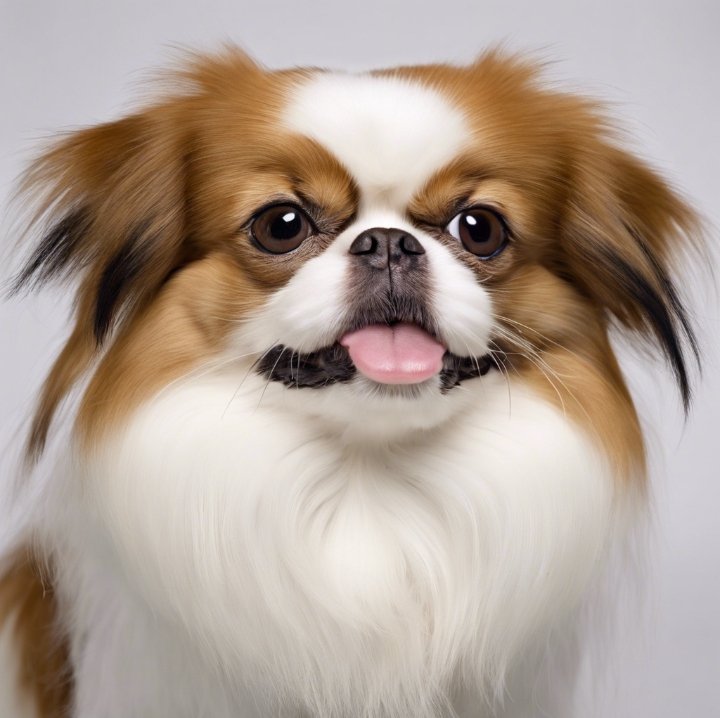
Height and Weight:
Male Height: 8 to 11 inches
Female Height: 8 to 11 inches
Male Weight: 7 to 11 pounds
Female Weight: 7 to 11 pounds
Color:
Japanese Chins come in many beautiful color combinations, including black and white, red and white, and tricolor (black, white and brown). Their coat is silky and long, giving them a luxurious appearance, with feathers on their legs and tail.
Temperament:
Japanese Chins are known for their affectionate and gentle nature. They are generally calm and peaceful, making them suitable for apartment living. They can be playful but equally enjoy rolling around, which means they adapt well to the energy level of their owners.
Personality:
These little dogs have charming, almost cat-like personalities. They are curious and enjoy exploring their surroundings, but they also like to sit in high places, like cats. Japanese Chins form strong bonds with their families and often become very attached to their favorite person. They are docile and friendly with strangers, making them excellent companion animals.
Care Needs:
Exercise: Japanese Chins do not require intensive exercise, making them ideal for people with quiet lifestyles. A few short walks and some indoor play time are usually enough to keep them happy.
Grooming: Their long, silky coat requires regular brushing, about two to three times a week, to keep it from becoming tangled and matted. They don’t shed much hair, but grooming helps keep their coat smooth and neat.
Training: Japanese Chins are intelligent but can be a bit stubborn. They respond best to gentle, positive training methods. Early socialization helps ensure that they grow up to be well-adjusted adults.
History:
The Japanese Chin has a rich history dating back over a thousand years. Despite their name, they actually have their roots in China, where they were gifted to Japanese royalty as a status symbol. In Japan, they were carefully bred to become the charming lap dogs we know today, often kept by the elite and admired for their beauty. The breed made its way to Europe and the United States in the 19th century and gained popularity as a beloved companion.
The Japanese Chin is a perfect blend of history, beauty, and affection, making them a wonderful choice for those looking for a small dog with a sweet and refined personality.
3. Shikoku:
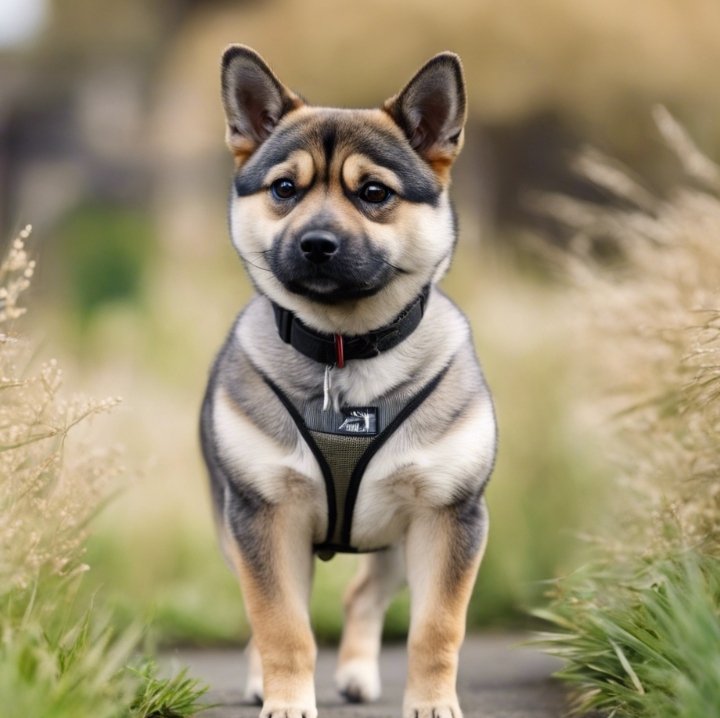
Height and Weight:
Male Height: 18 to 22 inches
Female Height: 17 to 21 inches
Male Weight: 35 to 55 pounds
Female Weight: 30 to 50 pounds
Color:
Shikoku dogs come in a few different colors: teal (a mixture of red and black hair), red, and black and brown. Their dense double coat is designed to protect them from harsh weather and outdoor conditions. Their tail is curved and wolf-like, which adds to their attractive looks.
Temperament:
Shikakus are known for their loyalty and alertness. They were bred to be hunting dogs, so they have a keen sense of awareness and strong hunting instincts. Although they are wary of strangers, they form strong bonds with their families and are very protective. Shikakus are also intelligent and curious, which makes them courageous dogs.
Personality:
Shikokus have a spirited, independent personality. They are energetic and thrive in active homes where they can explore and engage in outdoor activities. They are known for their bravery and tenacity, especially while hiking or outdoor adventures. At home, they are affectionate towards their owners, but can maintain a bit of aloofness, sometimes preferring their own space.
Care Needs:
Exercise: Shikakus need plenty of exercise to stay happy and healthy. Daily walks, runs or hikes are ideal for this breed. They enjoy being outside and do best with access to a yard or open spaces.
Grooming: Their double coat sheds moderately throughout the year, shedding heavily during seasonal changes. Brushing a few times a week can help manage loose hair and keep their coat looking good.
Training: Due to their independent nature, early training and socialization is essential. They are smart and can learn quickly, but they need consistency and patience. Positive reinforcement is the best method, as they respond well to praise and behavior.
History:
The Shikoku is an ancient Japanese breed, native to the mountainous regions of the island of Shikoku. They were originally bred to hunt boar and deer, which is why they are sometimes called the “Shikoku Ken” or “Kochi-Ken”. Their agile, athletic build and fiery instincts make them excellent hunting companions. The breed was almost brought to extinction during World War II, but dedicated breeders helped preserve it. Today, Shikokus are still considered a rare breed in Japan and around the world, but they are valued for their unique blend of loyalty and adventurous spirit.
Shikakus are a great choice for active dog lovers who appreciate a loyal companion with a keen sense of adventure. Their rich history and strong-willed nature.
4. Kishu Ken:
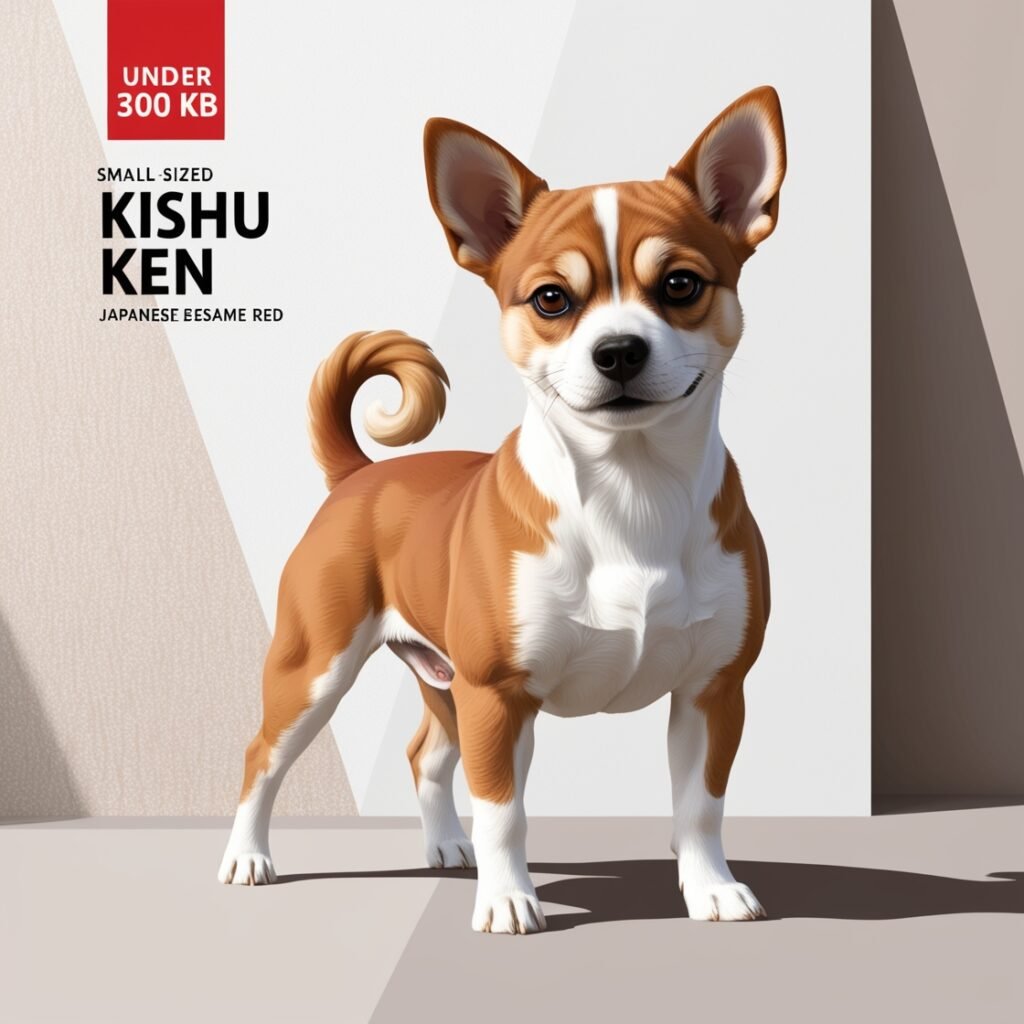
Height and Weight:
Male Height: 17 to 22 inches
Female Height: 16 to 20 inches
Male Weight: 30 to 50 pounds
Female Weight: 25 to 45 pounds
Color:
Kishu canes often come in solid colors, with white being the most common and preferred color. They can also be found in red or teal (red with black tips). Their short, dense double coat helps protect them from the elements and gives them a sleek, clean appearance.
Temperament:
Kishu Kens are known for their calm and reserved nature. They remain calm, not barking much unless they sense something unusual. Although they are wary of strangers, they are incredibly loyal to their families and make excellent watchdogs. Their hunting background means they have a strong drive to hunt and can chase small animals if not properly trained.
Personality:
Kishu Kens are independent but form strong bonds with their owners. They are affectionate towards their families, often choosing one individual as their particular favourite. They are brave and determined, especially when outdoors, showing a love of exploration and physical activities. Despite their independence, they are eager to please their owners, which makes them amenable to training when approached correctly.
Care Needs:
Exercise: Kishu Kens are active dogs that need daily exercise, such as walking, hiking or playing in a safely fenced yard. They thrive in homes where they have room to run and roam, making them better suited for active families.
Grooming: Their short double coat requires minimal grooming, with weekly brushing to remove loose hair and keep their coat looking good. They tend to shed more hair during seasonal changes, so brushing more frequently during that time helps control hair loss.
Training: Because of their independent nature, Kishu Kens benefit from early training and socialization. They are intelligent and can learn quickly, but consistency and patience are key. Positive reinforcement works best with treats and praise, and they appreciate the gentle approach.
History:
The Kishu Ken is an ancient breed that originated in Japan over a thousand years ago. Named after the Kishu region where they were developed, these dogs were bred to hunt larger game such as boar and deer. Their secretive and focused nature made them highly valued hunting companions . Despite becoming rare even in Japan, the Kishu Ken has retained its traditional appearance and characteristics. The breed was officially designated as a “Natural Monument” in Japan, reflecting its cultural and historical importance.
Today, the Kishu Ken remains a rare breed outside Japan, but those who appreciate their loyalty and calm demeanor keep them. They are suitable for people who enjoy the outdoors and want a devoted companion with a rich history. The Kishu Ken’s unique blend of independence and affection for its family makes it a special choice for dog lovers looking for a loyal friend.
5. Mameshiba Inu:

Height and Weight:
Male Height: 10 to 14 inches
Female Height: 9 to 13 inches
Male Weight: 10 to 18 pounds
Female Weight: 8 to 16 pounds
Color:
Mameshiba Inus come in the same color varieties as the standard Shiba Inu, including red, black and brown, teal (red with black-tipped hair), and sometimes white. They have a thick double coat that gives them a furry appearance and keeps them warm.
Temperament :
Playful
Confident
Alert
Curious
Loyal
Independent
Protective
Energetic
Origin:
The Mameshiba Inu originated in Japan and is essentially a smaller version of the Shiba Inu. The word “mame” means “bean” in Japanese, reflecting its small size. They were bred to be compact, making them more suitable as pets for smaller living spaces such as apartments.
Personality:
Mameshiba Inuse has an enthusiastic and lively personality. They are known for their playful nature and are often curious about their surroundings, which can make them entertaining companions. Despite their small size, they can be quite bold and adventurous, acting as if they are much larger than they are. Mameshiba Inus are affectionate towards their families, although they can be a bit reserved towards strangers. They are independent thinkers, but they thrive when they feel included as part of the family.
Care Needs:
Exercise: Mameshiba Inus are active and require daily exercise, such as walks, play time and mental stimulation through games or training. They love to explore, so taking them on adventures or to new places is great for them.
Grooming: They have a double coat that sheds moderately throughout the year and more heavily during seasonal changes. Brushing them a few times a week helps prevent hair loss and keeps their coat looking good.
Training: Mameshiba Inus are intelligent but can be stubborn, so early training and socialization are important. Positive reinforcement methods, such as treats and praise, work best. They can be a little challenging to train due to their independent nature, but with consistency, they can learn well.
History:
The Mameshiba Inu is a relatively recent variation of the traditional Shiba Inu, specifically bred to be smaller in size while still retaining the distinctive appearance and personality of its larger counterpart. In Japan, small dog breeds are popular due to urban living conditions, And Mameshiba became a favorite for its compact size. It was developed by selectively breeding smaller Shiba Inus to create a version that is better suited to the lifestyle of modern pet owners, especially those living in apartments or small homes.
Although the Mameshiba Inu is not officially recognized as a separate breed outside of Japan, it has attracted a lot of attention among dog fanciers around the world due to its cute, compact size and classic Shiba personality.
6. Kai Ken:

Height and Weight:
Male Height: 18 to 22 inches
Female Height: 17 to 20 inches
Male Weight: 30 to 40 pounds
Female Weight: 25 to 35 pounds
Color:
Kai Kens are known for their unique brindle coat, which can be black brindle (kuro-tora), red brindle (aka-tora), or a mixture of the two (chu-tora). Their coat has a dense double layer that protects them in various weather conditions and gives them a wild, tiger-like appearance.
Temperament :
Loyal
Intelligent
Alert
Brave
Energetic
Independent
Agile
Protective
Origin:
The Kai Ken is a rare breed that originated in Japan, specifically in the mountainous region of Kai in Yamanashi Prefecture. It is one of the oldest and most natural dog breeds in Japan, developed for hunting in the rugged terrain of its native region.
Personality:
Kai Kens are known for their intelligence and loyalty. They form strong bonds with their families and are naturally protective, which makes them excellent watchdogs. Although they can be reserved with strangers, they are affectionate towards their owners and love to spend time with them. Kai Keans are agile and adventurous, they love outdoor activities. Their intelligence means they learn quickly, but their independent nature requires a consistent and patient training approach.
Care Needs:
Exercise: Kai Kens are active dogs that require daily exercise to stay happy and healthy. They love running, hiking, and exploring, making them a great match for active families or individuals. A secure fenced yard or regular outdoor adventures are ideal for this breed.
Grooming: Their double coat sheds moderately throughout the year, shedding heavily during seasonal changes. Weekly brushing helps keep their coat looking great and reduces shedding, especially during shedding season.
Training: Kai Keynes are intelligent and eager to learn, but they can also be independent thinkers. Early socialization and consistent training is important to ensure that they grow up to be well-behaved adults. They respond well to positive reinforcement methods like treats and praise.
History:
The Kai Ken is one of the six native dog breeds of Japan, often called a “Natural Monument” of Japan because of its cultural significance. The history of the breed goes back hundreds of years, it was originally bred to hunt deer, boar and other small animals in the dense forests and mountainous areas of the Kai region. Their distinctive brindle coat helped them blend into their environment, making them effective hunters. Despite their hunting origins, they have a natural attraction to humans and have adapted well to life as family companions.
During World War II, the breed was almost on the verge of extinction, but dedicated breeders in Japan helped preserve the Kai Ken. Although still rare, this breed is slowly gaining recognition outside Japan for its unique appearance and loyal nature.
7. Hokkaido Inu:

Height and Weight:
Male Height: 18 to 20 inches
Female Height: 17 to 19 inches
Male Weight: 44 to 66 pounds
Female Weight: 40 to 60 pounds
Color:
Hokkaido Inus come in many colors, including red, white, black, brindle, teal (red with black-tipped hair), and wolf-gray. They have a thick double coat, designed to withstand cold weather, giving them a plush, strong appearance.
Temperament :
Loyal
Brave
Intelligent
Alert
Energetic
Affectionate
Protective
Determined
Origin:
The Hokkaido Inu originates from Japan’s northernmost island, Hokkaido. This breed has been around for centuries, originally bred by the Ainu people, an indigenous group, as hunting companions in the harsh, snowy conditions of the area.
Personality:
Hokkaido Inus are known for their unwavering loyalty and courage. They form deep bonds with their families and are very protective, which makes them excellent watchdogs. They are intelligent and quick to learn, often displaying a sense of independence.At home, they are affectionate towards their owners, enjoying attention and family time, but they can be reserved with strangers. They have a playful and adventurous side, always ready for outdoor activities or exploring new environments.
Care Needs:
Exercise: Hokkaido Inus have high energy levels and require regular exercise to stay healthy and happy. They thrive in active homes where they can go on long walks, hikes, or play in a spacious yard. Regular physical activity helps prevent boredom and keeps them well behaved.
Grooming: Their thick double coat sheds moderately throughout the year, with heavier shedding during seasonal changes. Weekly brushing is essential to keep their coat healthy and manage hair loss. During shedding season, brushing more frequently helps keep loose hair under control.
Training: Hokkaido Inus are intelligent and eager to please, but they have a stubborn nature. Consistent, positive training methods, such as using treats and praise, work best with them. Early socialization is important to ensure that they get along well with other pets and people.
History:
The Hokkaido Inu is one of the oldest dog breeds in Japan, believed to have been brought to the island of Hokkaido by the Ainu people over a thousand years ago. Bred to hunt large game such as bear and deer, this breed developed strength, stamina, and the ability to withstand cold climates. The Hokkaido Inu’s loyalty and determination made it a valuable companion to hunters and settlers in the rugged, snowy terrain of northern Japan.
During World War II, the Hokkaido Inu, like many Japanese breeds, suffered a decline in numbers.
8. Tosa Inu:

Height and Weight:
Male Height: 24 to 32 inches
Female Height: 22 to 28 inches
Male Weight: 90 to 200 pounds
Female Weight: 80 to 120 pounds
Color:
Tosa Inus can come in a variety of colors, including red, brindle, fawn, black, and white. They have a short, dense coat that is easy to maintain and provides protection from the elements.
Temperament :
Loyal
Calm
Confident
Brave
Gentle
Independent
Affectionate
Alert
Origin:
The Tosa Inu originated in Japan, specifically in the Tosa region (now known as Kōchi Prefecture). They were developed in the 19th century by crossing native Japanese breeds with Western dog breeds such as the Bulldog, Mastiff and Great Dane. Its purpose was to create a powerful and agile dog for the sport of dog fighting, which was popular at the time.
Personality:
Tosa Inus are known for their calm and peaceful nature. They are gentle giants who are affectionate with their families and often get along well with children. Despite their impressive size, they are quite gentle and friendly. Tosa Inus can be reserved with strangers, but their loyalty and protective instincts make them great guardians. They are intelligent and need mental stimulation, so they thrive in environments where they are challenged both physically and mentally.
Care Needs:
Exercise: Tosa Inas need regular exercise to maintain their physical health and mental well-being. Daily walks, play in a safe yard, and recreational activities are essential to keeping them happy. They enjoy activities that challenge them, such as obedience training and agility exercises.
Grooming: Their short coat is low-maintenance, requiring minimal grooming. Regular brushing helps remove loose hair and keep their coat healthy. Bathing should be done as needed depending on their activity level and environment.
Training: Tosa Inus are intelligent and eager to please, but their independent nature means they require consistent and firm training. Positive reinforcement methods, such as treats and praise, work best. Early socialization is important to ensure that they are well adjusted and comfortable with other pets and people.
History:
The Tosa Inu is a unique breed with an interesting history. Developed in Japan in the late 19th century, they were initially bred to be fighting dogs, making them strong and agile.The creation of the breed involved crossing different breeds, resulting in a dog that combined the strength of larger breeds with the agility and temperament of Japanese dogs.
As dog fighting became less popular and was eventually banned in Japan, the Tosa Inu was transformed into a companion and family dog. Today they are recognized for their loyalty, calm nature and impressive appearance. Despite their rarity, Tosa Inus are admired by those who appreciate their gentle nature and the rich history associated with them.
9. Hokkaido Inu:

Height and Weight:
Male Height: 18 to 22 inches
Female Height: 17 to 20 inches
Male Weight: 44 to 66 pounds
Female Weight: 40 to 60 pounds
Color:
Hokkaido Inus come in a variety of colors, including red, white, black, brindle, teal (red with black-tipped hair), and wolf-gray. They have a thick double coat designed to keep them warm in cold weather.
Temperament :
Loyal
Brave
Intelligent
Alert
Energetic
Affectionate
Protective
Determined
Origin:
The Hokkaido Inu originates from Hokkaido, the northernmost island of Japan. This breed has been around for centuries, initially developed by the Ainu people, an indigenous group, to help them hunt game in the harsh, snowy conditions of the area.
Personality:
Hokkaido Inus are known for their loyalty and strong bond with their families. They are courageous and protective, which makes them excellent watchdogs. Although they can be reserved towards strangers, they are affectionate and loving towards their owners.They have a playful side and enjoy outdoor activities, showcasing their adventurous spirit.
Care Needs:
Exercise: Hokkaido Inus have high energy levels and require daily exercise to stay healthy and happy. Regular walks, play time and outdoor adventures are essential to meet their activity needs.
Grooming: Their thick double coat sheds moderately throughout the year, with heavier shedding during seasonal changes. Weekly brushing helps manage hair loss and keep their coat healthy. Hair loss season requires more frequent brushing.
Training: Hokkaido Inus are intelligent and eager to learn, but they can be a bit stubborn. Early training and socialization is important to help them develop good manners. They respond well to positive reinforcement such as treats and praise.
History:
The Hokkaido Inu is one of the oldest dog breeds in Japan and is recognized as a “Natural Monument” of Japan due to its cultural significance. Originally bred for hunting, they were prized for their endurance and ability to navigate the snowy landscapes of Hokkaido. Over the years, he has adapted well to family life while maintaining his natural instincts.
After World War II, the Hokkaido Inu suffered a decline in numbers, but dedicated breeders have worked hard to preserve this remarkable breed. Today, they are celebrated for their loyalty, intelligence, and adaptability, This makes them wonderful companions for active families who appreciate their adventurous spirit and rich heritage.
10. Japanese Spitz:
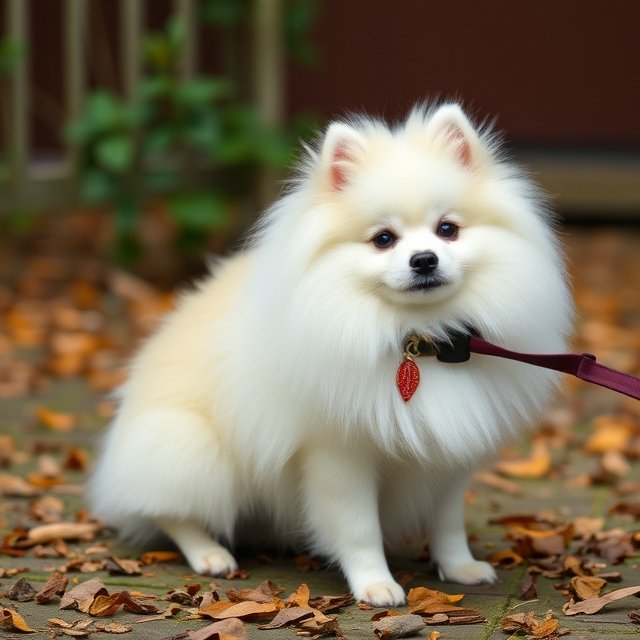
Height and Weight:
Male Height: 14 to 16 inches
Female Height: 12 to 14 inches
Male Weight: 18 to 24 pounds
Female Weight: 15 to 20 pounds
Color:
The Japanese Spitz is primarily known for its attractive white coat, which is thick and fluffy. This beautiful double coat contributes to their attractive appearance and helps keep them warm in cold weather.
Temperament :
Friendly
Playful
Intelligent
Alert
Loyal
Affectionate
Energetic
Adaptable
Origin:
The Japanese Spitz is believed to have been developed in Japan in the early 20th century, influenced by various small white dog breeds, including the American Eskimo dog and the German Spitz. This breed was created as a companion dog, and has since gained popularity in Japan and other parts of the world.
Personality:
Japanese Spitz dogs are known for their friendly and playful nature. They are very friendly and get along well with children and other pets. Their loyal and affectionate behavior makes them wonderful family companions. They are also quite intelligent, eager to learn and respond well to training, making them easy to handle. Their personality is lively and they enjoy being a part of family activities, often seeking attention and interacting with their loved ones.
Care Needs:
Exercise: Japanese Spitz dogs are energetic and require regular exercise to stay healthy and happy. Daily walks, play time and mental stimulation through sports or training are essential for their well-being. They thrive in environments where they can run and explore.
Grooming: Their thick, double coat requires regular grooming to prevent tangles and shedding. Brushing at least once a week is recommended, with more frequent brushing during shedding season to keep their coat in the best condition. Bathing should be done as needed to maintain their cleanliness and coat health.
Training: Japanese Spitz dogs are intelligent and eager to please, which makes training a positive experience. They respond well to positive reinforcement methods like treats and praise. Early socialization is essential to ensure that they grow up to be well-rounded and confident adults.
History:
The Japanese Spitz is a relatively modern breed that originated in Japan in the early 20th century. Although its exact lineage is not well documented, it is believed to have been created by crossbreeding various small white dog breeds, To develop a friendly and charming companion, which includes the American Eskimo dog. The breed quickly gained popularity due to its attractive appearance and wonderful temperament.
Today, the Japanese Spitz is much loved as a family pet in many countries. They are known for their cheerful nature and adaptability, making them a great choice for families, singles, and seniors. Their loyal and affectionate nature ensures that they are beloved members of any household, providing joy and companionship to their owners.
11. Toy Poodle :
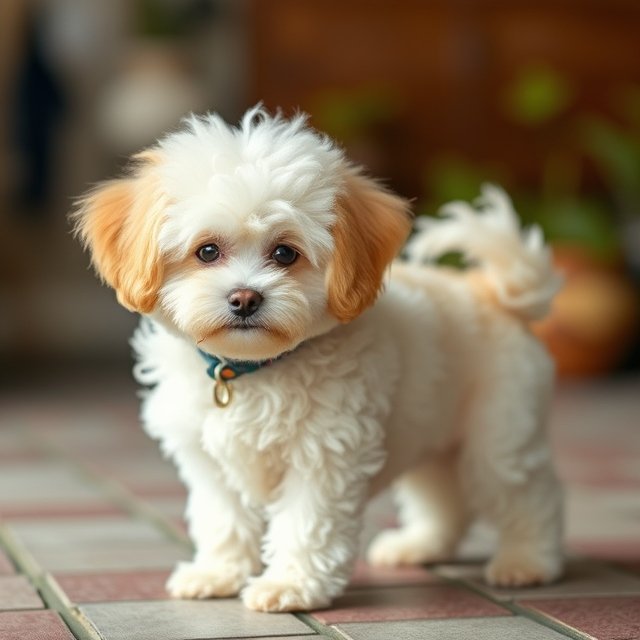
Height and Weight:
Male Height: 10 to 15 inches
Female Height: 10 to 15 inches
Male Weight: 6 to 9 pounds
Female Weight: 4 to 6 pounds
Color:
Toy Poodles come in a variety of colors, including black, white, apricot, cream, gray, and even multicolored or spotted variations. Their beautiful, curly coat is not only adorable, but also hypoallergenic, making them a great choice for allergy sufferers.
Temperament :
Intelligent
Playful
Alert
Affectionate
Energetic
Loyal
Friendly
Curious
Origin:
The Toy Poodle is a smaller version of the Standard Poodle, which originated in Germany as a Water Retriever. The Toy variety was developed in France in the late 19th century, where breeders aimed to create a small, companion-sized Poodle that would retain the intelligence and trainability of its larger relatives.
Personality:
Toy Poodles are known for their lively and vivacious personalities. They are extremely intelligent and eager to learn, which makes them one of the easiest breeds to train. They love to engage in activities and play games, often displaying a joyful and curious nature. Despite their small size, they are confident and not afraid to express their opinions. They are also very affectionate and love to spend time with their family, often forming strong bonds with their owners. Toy Poodles can be friendly with other pets and children, but socialization is important to ensure they are well adjusted.
Care Needs:
Exercise: Although Toy Poodles are small, they are energetic and require regular exercise to stay healthy. Daily walks, play time and mental stimulation through toys or training sessions are essential. They enjoy interactive games and will thrive in an environment where they can be active.
Grooming: Their curly coat requires regular grooming to prevent tangles and mats. Professional grooming every 4 to 6 weeks as well as brushing a few times a week is recommended to maintain their coat and appearance. Regular bathing will also help keep their coat clean and soft.
Training: Toy Poodles are highly trainable due to their intelligence and eagerness to please. They respond best to positive reinforcement techniques, such as treats and praise. Early socialization and obedience training are important to help them develop into well-rounded dogs.
History:
The Toy Poodle is a beloved companion breed with a rich history. Originally bred in Germany as water retrievers, poodles of all sizes became popular in France, where smaller versions were developed as companions. The Toy Poodle gained recognition in the late 19th century and soon became a favorite among dog lovers due to its charming personality and beautiful appearance.
Today, Toy Poodles are admired throughout the world not only for their beauty, but also for their intelligence and friendly behavior. They are often seen participating in dog sports and performing tricks, demonstrating their versatility as both companions and entertainers. Their loving nature and adaptability make them wonderful pets for families, singles, and seniors.
12. Chihuahua:
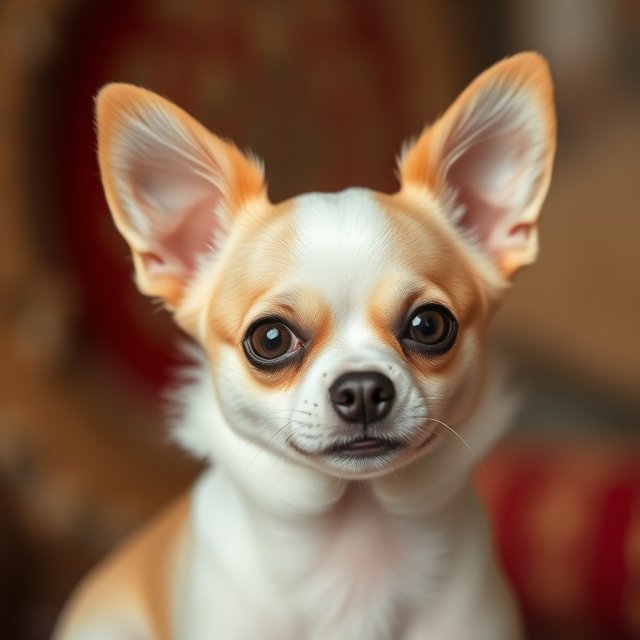
Height and Weight:
Male Height: 6 to 9 inches
Female Height: 6 to 9 inches
Male Weight: 3 to 6 pounds
Female Weight: 3 to 6 pounds
Color:
Chihuahuas come in a wide range of colors and patterns, including fawn, black, white, chocolate, cream, and brindle. They may also have different markings, such as spots or patches, making each one unique.
Temperament :
Loyal
Bold
Playful
Intelligent
Affectionate
Alert
Confident
Spirited
Origin:
The Chihuahua originated in Mexico and is named after the Mexican state of the same name. This breed has a long history, tracing its roots back to the ancient Techichi dogs, which were kept by the Toltec civilization. The modern Chihuahua began to take shape in the 19th century when they were recognized as a distinct breed.
Personality:
Chihuahuas are known for their big personalities in small bodies. They are often courageous, confident, and sometimes a little adventurous. Despite their small size, they are very loyal and protective of their families, which makes them excellent watchdogs. Chihuahuas are playful and enjoy engaging with their owners, often forming strong bonds with them. They can be affectionate and love to cuddle, but they can also display a feudal attitude, especially if they feel threatened or challenged.
Care Needs:
Exercise: Chihuahuas are small but still require regular exercise to stay healthy. Short walks, indoor playtime, and interactive games are great ways to keep them active. They have lots of energy but can also be satisfied having fun around the house.
Grooming: Chihuahuas come in two types of coats: short-haired and long-haired. Short-haired Chihuahuas require minimal grooming, while long-haired Chihuahuas require regular brushing to prevent tangles and mats. Bathing should be done as needed to keep their skin from drying out, but not too often.
Training: Chihuahuas are intelligent and can be trained relatively easily, but they can also be stubborn. Consistent and positive training methods, such as treats and praise, work best. Early socialization is important to help them develop good behavior with other pets and people.
History:
The Chihuahua has a rich and fascinating history that dates back to ancient Mexico. This breed is descended from the Techichi, a companion dog domesticated by the Toltecs around 300 AD. These small dogs were considered sacred and were often associated with religious ceremonies.
In the 19th century, as travelers and tourists began visiting Mexico, they discovered the adorable Chihuahua, leading to the breed’s popularity outside of Mexico. Over the years, the Chihuahua has become one of the most beloved toy breeds around the world, known for its spirited personality and loyal companion. Their small size and adaptability make them great pets for a variety of living situations, from apartments to homes with yards.
13. Miniature Dachshund:
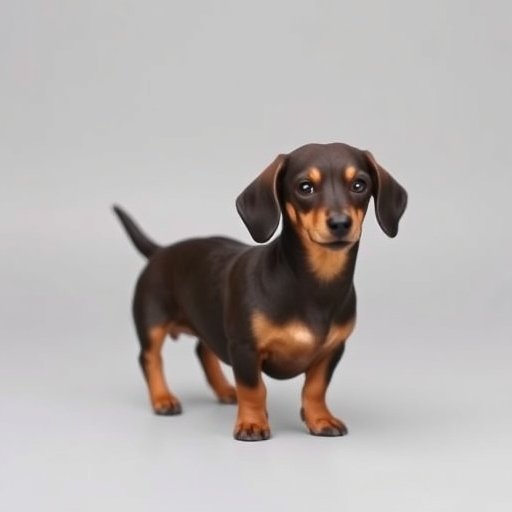
Height and Weight:
Male Height: 5 to 7 inches
Female Height: 5 to 7 inches
Male Weight: 11 pounds or less
Female Weight: 11 pounds or less
Color:
Miniature Dachshunds come in a variety of colors and patterns, including red, black and brown, chocolate and brown, cream and dapple (a mix of colors). Their coat can be smooth, long-haired or wire-haired, which adds to their unique charm.
Temperament :
Playful
Curious
Brave
Intelligent
Loyal
Friendly
Energetic
Stubborn
Origin:
The Miniature Dachshund originated in 19th century Germany, where they were bred as smaller versions of the Standard Dachshund. The breed was initially developed to hunt small game such as badgers and rabbits, thanks to their long bodies and strong sense of smell. Their name “Dachshund” translates to “badger dog” in German, highlighting their original purpose.
Personality:
Miniature Dachshunds are known for their lively and enthusiastic personalities. They are curious and love to explore their surroundings, often engaging in playful mischief. These dogs are loyal and form strong bonds with their families, making them affectionate companions. Despite their small size, they can be quite brave and protective, often displaying confident behavior. Their intelligence enables them to learn quickly, but they can also be a bit stubborn, so consistent training is important.
Care Needs:
Exercise: Miniature Dachshunds are active dogs that require regular exercise to stay healthy and happy. Daily walks, play time and interactive games are essential for their well-being. They enjoy sniffing around and exploring, so spending time outside is important.
Grooming: Grooming needs vary depending on coat type. Smooth-haired Dachshunds require minimal grooming, while those with longer hair require regular brushing to prevent tangles. The Wirehaired Dachshund requires occasional hand shedding to maintain the texture of its coat. Their skin requires regular bathing to keep it from drying out, but not too often.
Training: Miniature Dachshunds are intelligent and eager to learn but can be a little stubborn at times. Positive reinforcement techniques, such as treats and praise, work best. Early socialization is important to help them become well-adjusted and friendly adults. Consistency and patience during training are the keys to success.
History:
The Miniature Dachshund has an interesting history rooted in Germany, where the breed was developed in the late 1800s as a smaller counterpart to the Standard Dachshund. Originally bred for small game hunting, these small dogs quickly became popular companions due to their friendly nature and unique appearance.
In the early 20th century, the Miniature Dachshund began to gain popularity outside Germany, especially in the United States. His charming personality and adaptability to family life helped cement his place as a beloved pet. Today, Miniature Dachshunds are admired for their playful spirit, loyalty, and versatility, making them wonderful companions for families, singles, and seniors.
14. Akita Inu:

Height and Weight:
Male Height: 26 to 28 inches
Female Height: 24 to 26 inches
Male Weight: 100 to 130 pounds
Female Weight: 70 to 100 pounds
Color:
Akita Inus come in a variety of colors, including white, fawn, and various shades of red. Their thick double coat helps keep them warm in cold climates and often looks attractive.
Temperament :
Loyal
Courageous
Dignified
Independent
Affectionate
Alert
Intelligent
Reserved
Origin:
The Akita Inu is a Japanese breed that originated in the northern region of Japan, specifically Akita Prefecture. This breed was initially developed to hunt larger game such as bear, boar, and deer. The Akita Inu has deep cultural significance in Japan, often symbolizing loyalty and courage.
Personality:
Akita Inus are known for their strong, independent personalities. They are incredibly loyal to their families and can be reserved towards strangers, making them excellent watchdogs. Despite their somewhat aloof behavior, they are affectionate towards their loved ones and enjoy spending quality time with their family. He has a calm and dignified presence, which adds to his impressive stature. However, they can also be stubborn, so consistent training and early socialization is essential.
Care Needs:
Exercise: Akitas need regular exercise to stay healthy and happy. Daily walks, play time and mental stimulation are important. They enjoy outdoor activities and should have access to a secure yard to run around and explore
Grooming: Their thick double coat requires regular grooming to prevent shedding. Brushing at least once a week is recommended, with more frequent brushing during shedding season. Bathing should be done as needed to keep their coat clean and healthy.
Training: Akitas are intelligent but can be strong-willed and stubborn. Early training and socialization is important to help them develop good behavior and manners. Positive reinforcement techniques, such as treats and praise, are effective. Consistency and patience are important when training an Akita.
History:
The Akita Inu has a rich history dating back to ancient Japan. Originally bred for hunting and guarding, Akitas were highly prized for their bravery and loyalty. The breed gained international fame in the 20th century, especially after the story of Hachiko, an Akita known for his unwavering loyalty to his owner, became widely known.
In Japan, Akitas are considered a symbol of good health, happiness, and long life. These are often given as gifts to new parents and are respected in Japanese culture. Today, the Akita Inu is recognized throughout the world and appreciated as a loyal and devoted companion. Their attractive appearance and strong character make them a popular choice for families looking for a loving and protective dog.
15. Japanese Terrier:

Height and Weight:
Male Height: 13 to 15 inches
Female Height: 12 to 14 inches
Male Weight: 9 to 12 pounds
Female Weight: 7 to 10 pounds
Color:
The Japanese Terrier typically has a smooth, short coat that is predominantly white with black or brown spots. Their sleek appearance adds to their attractive looks and makes them easy to groom.
Temperament :
Friendly
Energetic
Playful
Intelligent
Loyal
Alert
Curious
Affectionate
Origin:
The Japanese Terrier is believed to have originated in Japan in the early 20th century. They were bred from a mix of small terrier breeds including the Toy Fox Terrier and imported European breeds. Originally used for small hunting, these dogs were also kept as companions.
Personality:
Japanese Terriers are known for their lively and friendly personalities. They are affectionate towards their families and love to be involved in activities. Their playful nature makes them great companions for children and adults. Although they are generally friendly, they can also be alert and protective of their home, making them good watchdogs. Their intelligence and curiosity make them keen learners, but they can also be a little stubborn at times, so consistent training is important.
Care Needs:
Exercise: Japanese Terriers are active dogs that require regular exercise. Daily walks, play time and mental stimulation are essential to keep them healthy and happy. They enjoy interactive games and can thrive in an environment where they can run and explore.
Grooming: Their short coat is low-maintenance, requiring minimal grooming. Regular brushing helps remove loose hair and keep their coat healthy. They should be bathed as needed to keep them clean and smelling fresh.
Training: Japanese Terriers are intelligent and responsive, making them relatively easy to train. Positive reinforcement methods, such as treats and praise, work best. Early socialization is important to help them develop good behavior with other pets and people.
History:
The history of the Japanese Terrier is relatively short but interesting. Developed in Japan in the early 1900s, they were created for hunting and companionship. Their origins can be traced back to a combination of various terrier breeds, which contributed to their playful and energetic nature.
Although not widely recognized outside Japan, the Japanese Terrier has gained popularity among people who appreciate their lively spirit and affectionate behavior. Today, they are raised as family pets, Known for their loyalty, intelligence, and ability to bond with their owners. Their playful nature and adaptability make them great companions for a variety of households, from families to singles.
Traits of Small Japanese Dog Breeds ;
Small Japanese dog breeds like the Shiba Inu and the Japanese Chin have unique qualities that make them stand out in the dog world. These breeds are often characterized by their spirited personalities and strong bonds with their owners. For example, the Shiba Inu is known for its courageous and confident nature, often displaying a stubborn nature, which can make training a fun challenge.
The Japanese Chin, on the other hand, is affectionate and playful, often thriving on human companionship. Their attractive appearance, such as the distinctive coat and expressive eyes, further add to their appeal. Additionally, many small Japanese breeds are known for their loyalty and alertness, making them excellent watchdogs despite their size.

In addition, these dogs generally require moderate exercise and they enjoy interactive play. Their care needs can vary, with some breeds requiring regular brushing to maintain their beautiful coat. Overall, Japanese dog breeds are small in size but big in personality, making them delightful companions for families and individuals. Whether you’re looking for a loyal friend or a playful companion, these small Japanese breeds have something special to offer.
Choosing the Right Small Japanese Dog Breeds for You ;
Choosing the right breed of small Japanese dogs for you can be an exciting journey, as these dogs offer a range of unique personalities and qualities. Consider your lifestyle and living conditions when choosing a breed. For example, if you lead an active life and enjoy outdoor activities, the Shiba Inu may be a good fit for you due to its energetic nature and love of play. However, if you prefer a more relaxed companion, the gentle and affectionate behavior of the Japanese Chin may be perfect for cozy evenings at home.
It is also important to think about grooming needs. Breeds such as the long-haired Japanese Chin require regular brushing, while the smooth-coated Shiba Inu is less demanding of care. Additionally, consider the temperament of each breed. Some, such as the Akita Inu, are known for their loyalty and protective instincts, while others, such as the Miniature Shiba Inu, are more friendly and outgoing.
By understanding the characteristics of these Japanese dog breeds that are small in size but big on personality, you can find the perfect match for your home and lifestyle. Ultimately, the right breed will bring happiness, companionship, and love to your life for many years to come.
Training Small Japanese Dog Breeds :
Training small Japanese dog breeds can be a fun and rewarding experience, as these dogs are often intelligent and eager to please. However, it is essential to approach the training with patience and consistency. Breeds like the Shiba Inu can be a bit stubborn, so using positive reinforcement techniques, such as treats and praise, works best. This approach encourages them to learn without feeling pressured.

Start with basic commands like “sit,” “stay,” and “come.” Short, engaging training sessions will help maintain their interest and focus. Socialization is equally important, especially for breeds that may be reserved around strangers like the Akita Inu. Exposing them to different people, pets, and environments from an early age will help them become well-adjusted adults.
Additionally, incorporating fun activities like agility training or obedience classes can provide mental stimulation and strengthen the bond between you and your dog.
Remember that every dog is unique, so tailor your training methods to their personality. By understanding the specific needs of these Japanese dog breeds, small in size but big in spirit, you can develop a loving relationship that promotes good behavior and increases their overall happiness.
Where to Find Small Japanese Dog Breeds ;
Finding small Japanese dog breeds can be an exciting adventure, and there are many avenues you can explore. One of the best places to start is through reputable breeders who specialize in these breeds. Look for breeders who are members of recognized kennel clubs and prioritize the health and temperament of their dogs. They can provide valuable information about the breed and help you find a puppy that suits your lifestyle.
Another option is to visit local animal shelters and rescue organizations. Sometimes, small Japanese breeds end up in shelters due to unexpected circumstances, and adopting them can be a gratifying option. Keep an eye out for breed-specific rescues, as they often have small Japanese dog breeds looking for loving homes.

Online platforms and breed clubs are also useful resources. Websites dedicated to specific breeds can connect you with breeders and rescuers. Social media groups and forums can provide insight and recommendations from fellow dog lovers.
By exploring these paths, you can find the perfect companion among the charming Japanese breed dogs, small in size but big in heart, which will ensure that you welcome a loving and loyal friend into your home.
** Conclusion **
Ultimately, small Japanese dog breeds offer a unique blend of charm, personality, and loyalty that make them wonderful companions for a variety of lifestyles. From the spirited Shiba Inu to the affectionate Japanese Chin, these breeds are not only adorable but also bring joy and companionship to our lives. Understanding their specific needs – such as exercise, grooming and training – ensures they thrive in a loving environment.
Whether you’re looking for a playful friend to join you on outdoor adventures or a furry companion for quiet evenings at home, there is a small Japanese breed that is perfect for you. By taking the time to research, connecting with reputable breeders or rescue organizations, and committing to proper care, you can welcome one of these delightful dogs into your family.
Ultimately, the bond you will form with your small Japanese dog will be filled with love, loyalty, and countless fond memories. So, consider adopting one of these wonderful breeds and enjoy the happiness they bring to your life!
You might be interested in reading this post as well 30 Best Medium small dog breeds
“Tiny Companions from the Land of the Rising Sun: Exploring Japan’s Smallest Dog Breeds” Introduction to Small Japanese Dog Breeds Small Japanese dog breeds have a special charm that sets them apart from others. Known for their intelligence, loyalty, and unique appearance, these dogs have captured the hearts of pet lovers around the world. From…
What are some common small Japanese dog breeds?
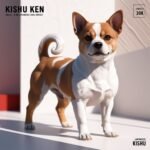
Some popular small Japanese dog breeds include the Shiba Inu, Japanese Chin, Miniature Shiba Inu, and Kishu Ken. Each breed has its unique characteristics and personality traits.
Are small Japanese dog breeds good for families?

Yes! Many small Japanese breeds, like the Japanese Chin and Miniature Schnauzer, are affectionate and playful, making them great companions for families, including those with children.
How much exercise do small Japanese dog breeds need?

Most small Japanese dog breeds require moderate exercise. Daily walks, playtime, and mental stimulation are important to keep them happy and healthy.
Do these breeds require special grooming?

Grooming needs vary among small Japanese breeds. For example, the Japanese Chin has a long coat that requires regular brushing, while the Shiba Inu has a shorter coat that is easier to maintain.
How do I train a small Japanese dog breed?

Positive reinforcement training methods, such as treats and praise, work best for small Japanese breeds. Consistent training and early socialization help them develop good behavior.
Can small Japanese dog breeds adapt to apartment living?

Yes, many small Japanese breeds adapt well to apartment living, provided they receive regular exercise and mental stimulation.
